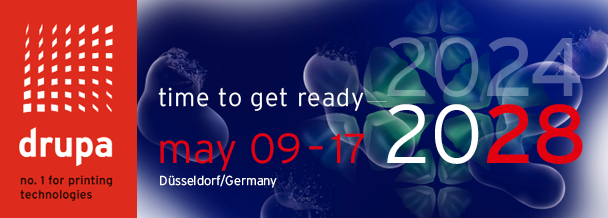Building a sustainable future in printing & packaging: embrace a comprehensive approach

A guest article by By Mike Ferrari (Founder of Ferrari Innovation Solutions and President of the Consortium For Waste Circularity ).
Sustainability in Printing & Packaging - What’s the problem?
There are many stories in the media that the current recycling infrastructure is inadequate. It burdens the consumer as well as relies on them to do the right thing to avoid contamination. The current infrastructure requires a high degree of sorting leaving much that goes to landfills or incineration. Plastics recycling is actually “down-cycling” to lower specification applications. Paper board is the most recycled of all the material classes in US according to the Environmental Protection Agency (EPA), yet this only captures 68% leaving 32% going to landfills or incineration. Some brands are turning away from plastics to paper and all LCA’s indicate this is worse for the environment. Much is being said about banning plastics, replacing plastics with alternative materials, compostability, biodegradable plastics, and boosting current recycling. This work is classified as upstream material alternatives. This requires the ability to recover pure streams of materials and the capability to do this is poor despite decades of investment in education and technology to sort waste. We have proven that recycling based upon sorting waste is destined to fail. A material-by-material approach in solving the sustainability crisis is proving to be problematic because it tends to focus on incremental improvements at best.
While all of this is well intended, we must step back and ask, “What problem should we be solving?” The problem we should be solving is recycling ALL waste, not just plastics. At some point all products and packages reach an “end of life” and that is where there should be focus on downstream technology to ideally take all that remains beyond current recycling and process this with no further sorting to useable and valued products. The goal should be creating true circularity of all materials to end landfills and incineration.
Urban centers are reaching landfill capacity and will face transporting waste to a farther landfill location or incineration. Neither is a good solution. Landfills are reported by the EPA as the third highest contributor of methane gas warming the planet. Once land is polluted, it is not returned to residential housing, farming or industrial use and requires monitoring even after reaching capacity and closure. Lastly, there is the potential for ground water contamination despite newer landfills having liners. Residents living in the nearby surrounding area to landfills are unfortunate as they are subjected to odor and biological hazards.
Besides health and environmental issues, landfills and incinerators also pose an environmental justice issue. People in the lower economic bracket are the ones living in close proximity and exposed to the risks. We should can do better with our Municipal Solid Waste (MSW) and end these archaic end of life practices.
But what if we could recycle everything without relying on sorting? What if we could employ robust recycling processes that can accept everything in waste and convert it into a primary building block for new products, plastics and packaging? If sorting waste is the problem, robust recycling is the solution. The key to a successful recycling ecosystem is robustness. Many forms of recycling can thrive so long as robust recycling processes are available to process what can’t be sorted or recycled and ends up to be landfilled or incinerated.
Is There Technology Capable of Processing Municipal Solid Waste?


Consortium For Waste Circularity

Business Model

Testing Trials - Case Study
What Can Brands/Printers/Packaging Suppliers Do?
About the author

Mike Ferrari is Founder of Ferrari Innovation Solutions, a brand packaging consultancy to help leaders bring delight to consumers. Mike is also the President of the Consortium For Waste Circularity, a non-profit 501C3 to align the industry on a future without waste by supporting the transformation of landfills to a circular economy. Previously Mike completed a 32-year career with The Procter & Gamble Co. delivering initiatives for some of the world’s leading billion-dollar brands.
You can reach Mike under LinkedIn or under www.mike-ferrari.com



